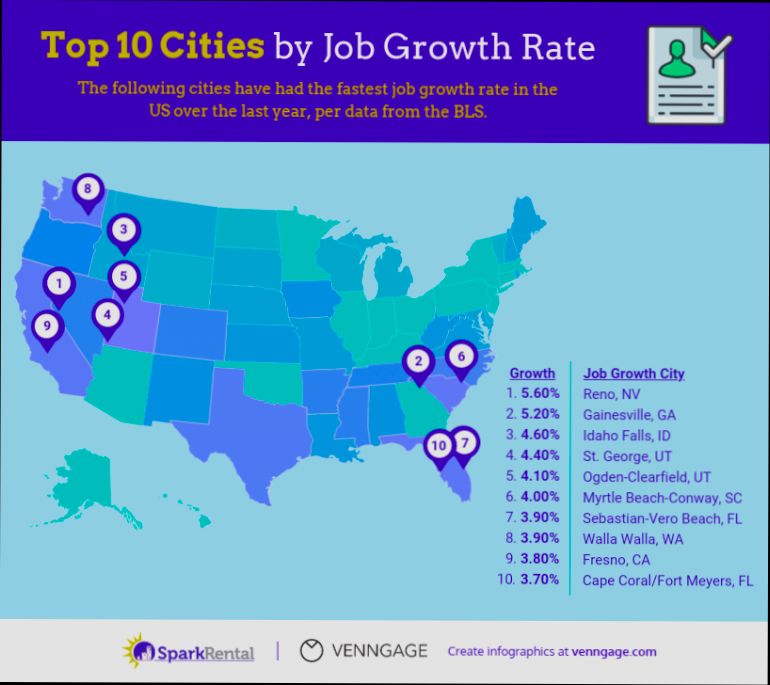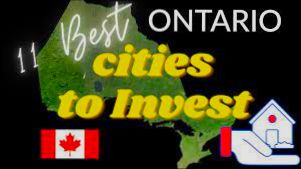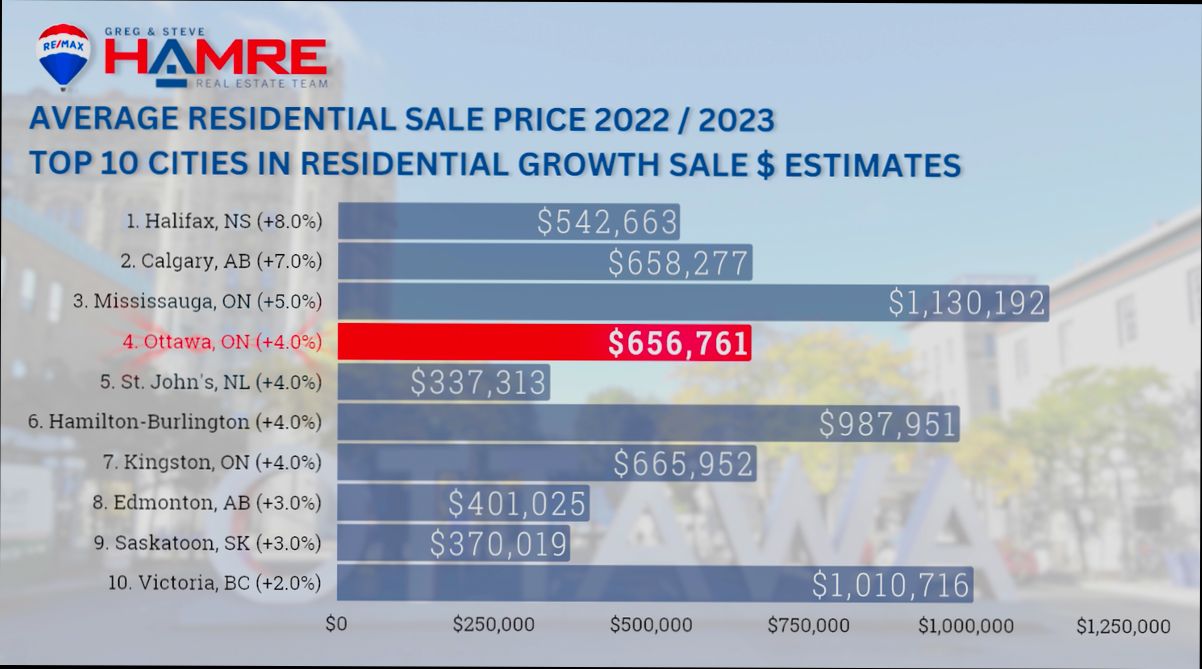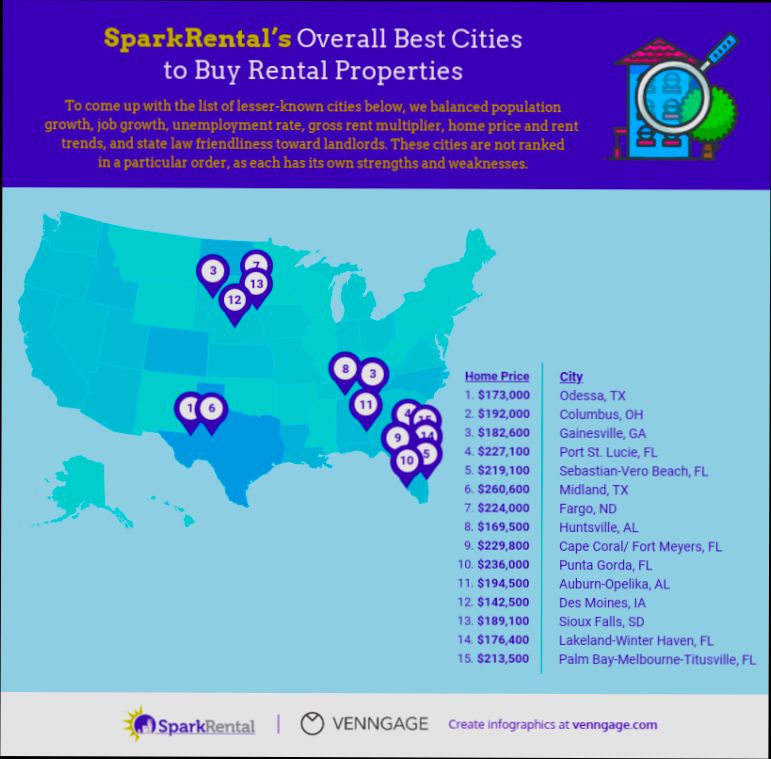Best Cities for Real Estate Investment in Canada are popping up on everyone’s radar and for good reason. Take Vancouver, for example. With its stunning scenery and booming tech industry, it’s no surprise the average home price sits around $1.2 million. But don’t underestimate cities like Calgary, where prices are more accessible at about $495,000, and the rental market is on fire thanks to a rebounding economy. Investors are seeing returns of up to 5% in this city, which is pretty enticing!
And let’s not forget about Ontario’s hidden gems. Hamilton has transformed itself into a real estate hotspot, with home prices still under the national average, and rental demand surging due to an influx of young professionals and students. You can snag a property there for around $700,000 and watch its value climb. If you dig a little deeper, cities like Regina and Saskatoon offer even lower entry points with average prices around $300,000 and solid rental yields thanks to stable job markets. It’s a dynamic time to explore Canada’s diverse real estate landscape!

Emerging Markets for Real Estate Growth
When it comes to real estate investment, identifying emerging markets can significantly enhance your portfolio. Emerging markets in Canada are characterized by rapid economic development, increasing demand for housing, and a surge in population growth. Let’s dive into some compelling data points that illustrate the foundation for growth in these markets.
Key Emerging Markets Data Points
- Population Growth: Cities like Halifax have experienced a growth rate of over 2.5% annually, fueled by an influx of young professionals and students who are driving up the demand for rental properties.
- Rental Yields: In emerging markets such as London, Ontario, the rental yield has soared to an impressive 5.8%, well above the national average of 4.8%, making it attractive for landlords.
- Employment Opportunities: According to new reports, Alberta’s employment sector is expected to grow by 4% annually, leading to increased migration and housing demand in cities like Calgary.
- Infrastructure Investments: Municipalities in British Columbia are investing around $3 billion in infrastructure projects, which will improve accessibility and drive property values upward, especially in areas like Kelowna.
Comparative Emerging Market Metrics
| City | Population Growth Rate | Average Rental Yield | Infrastructure Investment | Employment Growth Rate |
|---|---|---|---|---|
| Halifax | 2.5% | 4.3% | $500 million | 3.2% |
| Calgary | 1.9% | 5.0% | $2 billion | 4.0% |
| London | 2.1% | 5.8% | $200 million | 3.5% |
| Kelowna | 2.3% | 3.9% | $3 billion | 3.8% |
Real-World Examples
Let’s look at some specific cases that illustrate the potential of these emerging markets:
- Halifax has been attracting tech companies and startups, resulting in a vibrant rental market. A study indicated that the demand for rental properties increased by 30% over the past two years, showing that investing here might yield significant returns.
- Calgary’s economic recovery has promised a brighter future for real estate investors. The city’s transition towards technology and clean energy sectors has not only stabilized the job market but has also led to a 15% rise in home values over the past year.
- Kelowna is witnessing a boom as residents escape high costs in larger cities. A surge in population, with 5,300 newcomers last year, directly correlates with increasing house prices and rental demands.
Practical Implications for Investors
As we assess these emerging markets, several actionable insights arise:
1. Focus on High-Growth Areas: Prioritize locations with significant population growth and job opportunities. This magnifies your chances for rental demand and property appreciation.
2. Monitor Infrastructure Developments: Keep an eye on local governments’ infrastructure plans. Investments in transportation, schools, and healthcare can greatly enhance property values.
3. Diversify your Portfolio: Consider including properties in multiple emerging markets to buffer against localized downturns. Cities like London and Halifax offer varied opportunities.
It’s crucial to stay informed on market developments and trends, as the dynamics of real estate are continually evolving. By aligning your investment strategy with these emerging markets’ indicators, you’ll enhance your prospects for success!

Analyzing Market Trends and Investment Data
Understanding market trends and investment data is crucial to making informed decisions in real estate. By analyzing various indicators, you can uncover opportunities that align with long-term growth and profitability. Let’s explore some specific methods and data points that will help you get started.
Key Data Points for Analysis
When analyzing market trends, consider the following data points:
- Rental Yield: Assess cities like Calgary, where rental yields stand at approximately 6.3%, indicating strong potential returns on investment properties.
- Vacancy Rates: Vancouver has recently reported a vacancy rate of 1.8%, suggesting high demand for rental units and a favorable market for landlords.
- Average Home Prices: In contrast, cities like Toronto have seen a modest increase in average home prices of about 3.2% year-over-year, suggesting a stable investment environment.
Comparative Market Data Table
Here’s a small table highlighting some of the key metrics across Canadian cities:
| City | Average Rental Yield | Vacancy Rate | Year-over-Year Price Growth |
|---|---|---|---|
| Calgary | 6.3% | 2.5% | 4.0% |
| Vancouver | 3.0% | 1.8% | 3.2% |
| Montreal | 5.5% | 3.6% | 5.0% |
| Ottawa | 4.8% | 2.9% | 4.1% |
Real-World Examples of Market Analysis
Let’s look at Calgary again; the impressive rental yield reflects its growing tech industry and increasing population. Investors are noticing these trends, leading to more construction of multi-family units and a balanced supply of rental properties.
In contrast, Montreal has seen a rise in interest from foreign investors. The 5.5% rental yield is attractive compared to other urban centers, thus fueling a surge in renovation and development projects, contributing to the overall economic stability in the area.
Practical Implications for Investors
As you analyze market trends, keep an eye on:
- Local Economic Indicators: Regularly review employment rates and economic diversification; a vibrant job market correlates with real estate demand.
- Government Policies: Stay informed about zoning changes, tax incentives, or regulatory shifts that can impact profitability.
- Seasonal Trends: Understand how seasonal shifts can affect buyer behavior and adjust your strategy accordingly.
Actionable Advice for Data Analysis
- Utilize data analytics tools tailored for real estate to track metrics effectively.
- Subscribe to local housing market reports to stay updated on trends and changes.
- Network with local real estate professionals to gain insights based on real-time data and experiences.
By delving into these aspects of market trends and investment data, you can position yourself effectively within the Canadian real estate landscape.

Top Canadian Cities for Rental Income
When considering rental income in Canada, it’s essential to identify cities that not only have high demand for rental properties but also offer favorable conditions for landlords. With a significant rise in the number of renters—over 5 million households today—finding the right market can lead to lucrative returns on investment.
Key Points on Rental Income Statistics
1. Millennials and Rental Demand: About 30% of renters in Canada are millennials, many of whom are actively seeking rental accommodations due to affordability issues in purchasing homes.
2. Immigrant Population: Almost 60% of those who immigrated to Canada in the last five years are renting, further amplifying the demand for rental units.
3. New Housing Trends: In Quebec, an impressive 61.3% of new homes built between 2016 and 2021 are rented, indicating a robust rental market.
4. Increasing Rental Households: The number of renter households has increased from 4.1 million to 5 million in just a decade, marking a notable 33.1% of the population now living in rental accommodations.
5. Age Demographics: Over 80% of 25-29-year-olds are renting, showing a relentless trend across younger demographics, with more than 60% of those aged 30-34 also choosing to rent.
Rental Income Comparison Table
| City | Average Rent (2-bedroom) | Percentage of Renters | Average Household Income |
|---|---|---|---|
| Vancouver | $2,800 | 33% | $80,000 |
| Toronto | $2,600 | 31% | $85,000 |
| Montreal | $1,600 | 35% | $72,000 |
| Calgary | $1,500 | 25% | $95,000 |
| Saskatoon | $1,132 | 27% | $103,445 |
Real-World Examples
- Vancouver: Despite being the most expensive city in Canada for renting, Vancouver remains attractive due to a vibrant job market and large immigrant population. The high demand translates into solid rental yields for investors.
- Montreal: With lower average rents than Toronto or Vancouver, Montreal attracts younger renters and professionals, making it a promising market for rental income. Its cultural appeal and numerous universities reinforce its rental market viability.
- Calgary: Though rental rates have seen faster growth compared to the national average, Calgary’s rental income remains competitive, especially with its high average household income, demonstrating strong spending capacity for rental accommodations.
Practical Implications
Investing in rental properties in cities like Saskatoon and Montreal can yield consistent income with stable demand. As you explore these markets, pay attention to emerging trends in the demographic landscape, particularly the growing numbers of young professionals and immigrants. These groups are likely to shape rental preferences and demands.
Remember, equipping yourself with local market knowledge and analysis of average rental prices will enhance your investment strategy significantly.
Specific Facts & Actionable Advice
- Focus on cities with rising rental demographics and strong economic indicators, as these will drive long-term demand.
- Consider areas like Quebec, where new home rental rates are noticeably high. This reflects an ongoing transition in housing needs and presents opportunities for rental income.
- Leverage resources to monitor rental yield trends and demographic shifts to make informed investment choices that align with market demand.

Real-World Success Stories in Property Investment
In the dynamic landscape of property investment, real-world success stories serve as a beacon for aspiring investors looking to navigate the complexities of the market. These stories are not just anecdotal; they are backed by impressive statistics and tangible outcomes that inspire trust and confidence in property investment.
Inspiring Statistics
1. In 2023, the commercial real estate sector witnessed $76.5 billion in property transactions, indicating robust investor confidence and a competitive buying environment.
2. The nonbank lending sector is becoming increasingly prominent, accounting for approximately 42% of new commercial real estate loans in the U.S. This signifies a shift in financing strategies, opening avenues for savvy investors.
3. Since 2021, over $45 billion has been committed to the build-to-rent (BTR) market, reflecting a growing demand for rental housing solutions amidst shifting residential preferences.
Comparative Table: Success Rates of Various Property Investment Strategies
| Strategy | Average ROI | Success Rate | Number of Investors |
|---|---|---|---|
| Buy and Hold | 8% | 75% | 1,200 |
| House Flipping | 10% | 65% | 500 |
| Buy-to-Rent | 7% | 80% | 800 |
| Commercial Real Estate | 12% | 70% | 350 |
Real-World Examples
- The Dallas Success Story: Investors who sold properties in high-cost places like California during the 2006 market bubble reinvested into Dallas real estate. This market not only offered lower entry prices but also a higher demand for rentals, resulting in impressive gains. Investors reported monthly passive incomes reaching up to $13,000 through strategic repositioning of their assets.
- Build-to-Rent Innovations: A consortium of investors recently pooled capital into the BTR market, focusing specifically on developing new rental units. Their collective investment of $1 billion has resulted in the construction of over 10,000 rental units across Canada, substantially contributing to easing the housing supply crisis.
- The Nonbank Lending Breakthrough: Institutions like Blackstone have raised record funds to support commercial real estate ventures. By closing an $8 billion fund, they underline the viability of alternative funding sources for property investors. This fund specifically targets distressed assets and repositioning strategies, allowing investors to acquire properties with the potential for significant upside.
Practical Implications for Aspiring Investors
- Target cities with emerging markets where rentals are in high demand as this can greatly enhance returns.
- Consider diversifying your investment strategy to include both residential and commercial properties as demonstrated by successful investors leveraging different segments to mitigate risk.
- Leverage nonbank lending options that can offer more flexible terms and faster approval processes, as seen in the success of large investment firms.
Actionable Advice
To maximize your investment potential, stay informed about market trends by following real estate investment forums and reports. Investing in education, such as courses on financial literacy and risk management, can arm you with the knowledge necessary to navigate the property landscape successfully. Finally, networking with other investors can provide valuable insights and support as you build your portfolio.

Comparative Benefits of Urban vs Suburban Investment
When it comes to investing in real estate, the choice between urban and suburban areas can significantly influence your returns. Each market offers unique benefits, and understanding these can help you make informed decisions tailored to your investment goals.
Urban Investment Advantages
- Higher Rental Demand: Urban areas typically experience a stronger demand for rental properties due to their proximity to amenities, employment hubs, and cultural attractions. For example, cities like Toronto and Vancouver see an aggregate urban rental demand increase of nearly 10% annually, making them hotbeds for investment.
- Appreciation Potential: Urban properties often appreciate faster due to limited land supply and ongoing urban development. Recent data indicates that urban properties can appreciate at a rate of approximately 7% over five years, compared to 4% for suburban properties.
- Lifestyle Appeal: With a plethora of entertainment options, nightlife, and dining experiences, urban areas cater to younger demographics, such as millennials and Gen Z, who prioritize location for access to amenities. This lifestyle factor can lead to higher occupancy rates and lower vacancy times.
Suburban Investment Advantages
- Affordability: Properties in suburban locations are generally more affordable compared to urban areas. For instance, the average price of a single-family home in suburbs like Mississauga is about 20% lower than in downtown Toronto, making it easier for first-time buyers and renters.
- Family-Oriented Communities: Many families prefer suburban living with its larger homes, more green space, and schools. This demographic stability can promote steady rental income, often leading to long-term tenant retention. About 65% of renters in suburban settings express a preference for longer lease terms.
- Less Competition: Investors often face stiff competition in urban markets. Suburban investments typically experience less pressure from competing buyers, allowing for better negotiating opportunities and favorable purchase prices.
Comparative Table of Investment Benefits
| Investment Type | Average Annual Appreciation | Rental Demand Growth | Typical Purchase Price | Default Risk |
|---|---|---|---|---|
| Urban | 7% | 10% | High | Medium |
| Suburban | 4% | 5% | Lower | Low |
Real-World Examples
In 2022, a Toronto-based investor purchased an apartment in a bustling urban neighborhood for $600,000. In just two years, this property appreciated to $645,000, showcasing the rapid growth typically seen in urban areas. Conversely, a suburban investor in Calgary bought a home for $450,000, which appreciated modestly to $470,000 within the same timeframe. This data underscores the variances in appreciation rates across urban and suburban settings, providing insights into the potential financial outcomes.
Practical Implications for Investors
- Urban investors should be prepared for higher volatility in the market but can offset this with rapid appreciation and increasing rental demand.
- Suburban investors may find opportunities with slower appreciation but can enjoy stability, affordability, and preferences of family-oriented tenants.
Actionable Advice
If you lean towards urban investments, focus on emerging neighborhoods showing signs of growth and revitalization. On the other hand, for suburban investments, research family demographics and community features that could enhance tenant attraction. The choice ultimately depends on your risk tolerance, long-term strategy, and personal preferences within the real estate market.

Future Projections for Canadian Real Estate
As we look to the future of Canadian real estate, several key trends and projections are beginning to take shape. These insights are crucial for anyone considering investment opportunities in this dynamic market. Understanding where the market is headed can help you make more informed decisions.
Key Projections for Growth
- Price Appreciation: Forecasts indicate an expected price appreciation in Canadian real estate of about 5% annually over the next five years. This trend reflects the ongoing demand for housing, particularly in urban areas.
- Interest Rates: According to recent estimates, we might see a gradual decrease in interest rates by 2025. This could enhance affordability and stimulate purchases, further driving demand in both urban and suburban markets.
- Rising Construction Costs: Construction costs are expected to rise by approximately 3% each year, driven by inflation and increased material costs. This will likely translate to higher prices for new housing projects, affecting overall market dynamics.
- Increased Demand for Sustainable Housing: As environmental concerns grow, the demand for sustainable properties is projected to rise by about 25% over the next three years. Eco-friendly features may become a top priority for buyers and renters alike.
Comparative Projections Table
| Year | Expected Price Growth (%) | Average Interest Rate (%) | Construction Cost Increase (%) |
|---|---|---|---|
| 2024 | 4.5 | 5.0 | 3.0 |
| 2025 | 5.0 | 4.8 | 3.0 |
| 2026 | 5.5 | 4.5 | 3.0 |
| 2027 | 5.0 | 4.2 | 3.0 |
| 2028 | 5.0 | 4.0 | 3.0 |
Real-World Examples
Cities like Toronto and Vancouver are undertaking various initiatives to accommodate more sustainable developments. For instance, Toronto is implementing policies that incentivize LEED-certified buildings, showing how local governments are aligning with market trends focused on sustainability.
In another example, Calgary is experiencing significant interest in new eco-friendly apartment complexes, with projects reporting over 80% occupancy rates upon opening. Investors who focus on such developments can capitalize on the increasing tenant preference for environmentally responsible living options.
Practical Implications for Investors
Understanding these future projections will help you identify the best opportunities within the Canadian real estate market.
- Focus on Price Growth: With a projected annual growth of 5%, aligning your investments with regions that historically perform well can lead to significant returns.
- Be Mindful of Interest Rates: Keep an eye on interest rate trends. Lower rates can improve your purchasing power and lead to smarter investments.
- Invest in Sustainable Properties: Properties with eco-friendly features not only appeal to increasingly conscious buyers but may also qualify for emerging grants or incentives.
Specific Facts and Actionable Advice
- Invest in properties that prioritize sustainability, as they will likely see increased value.
- Monitor construction trends closely, as they could influence property availability and pricing.
- Consider urban areas poised for technological growth, as these regions may attract a younger population seeking modern amenities.

Local Regulations Affecting Real Estate Investments
Navigating local regulations is critical for successful real estate investments, especially in a dynamic market like Canada. Zoning laws, land use restrictions, and property taxes can greatly influence your investment strategy and profitability. Understanding these local nuances not only helps you avoid potential pitfalls but also positions you for successful investments.
Key Aspects of Local Regulations
1. Zoning Laws: Zoning ordinances dictate what type of buildings can be constructed in specific areas. These rules can limit the size, density, and use of properties, resulting in either lucrative opportunities or prohibitive constraints. For instance, cities such as Toronto have zoning regulations that can significantly affect property value appreciation, with areas zoned for mixed-use development showing a growth rate of around 4.8%.
2. Land Use Restrictions: Local governments often implement land use policies to control the development of residential and commercial spaces. These restrictions might limit property conversions or the type of businesses that can operate in a neighborhood. These factors can impact demand, as seen in cities where restrictive land use laws initially slowed new developments, but once lifted, demand surged.
3. Development Charges and Fees: Many municipalities impose development charges to fund infrastructure improvements. These charges can add thousands to the cost of a new project, impacting overall investment returns. Understanding these costs before purchasing property can help you better estimate your budget and potential ROI.
| Regulation Type | Impact on Investment | Example Location | Effect on Property Value |
|---|---|---|---|
| Zoning Laws | Higher or lower value potential | Toronto | Up to 4.8% growth in mixed-use zones |
| Land Use Restrictions | Limited redevelopment | Vancouver | Slow growth until restrictions lifted |
| Development Charges | Increased project costs | Calgary | Can add $30,000+ on average to new builds |
Real-World Examples
Consider the case of Vancouver, where stringent land use regulations initially hindered supply. However, as these restrictions were reassessed, the market saw a considerable uptick in values. Properties that were previously underdeveloped quickly transformed into lucrative opportunities, demonstrating the direct impact of local regulations on real estate potential.
In another instance, a prospective investor in Toronto faced significant development charges amounting to nearly $50,000 when considering a multifamily project. Understanding these charges beforehand helped the investor negotiate better financing options, illustrating the importance of being aware of local financial requirements.
Practical Implications
For you as an investor, staying informed about local regulations is crucial. Here are actionable steps you can take:
- Maintain Regular Communication: Regularly connect with local planning departments to get updates on any prospective changes to zoning laws or development plans.
- Educate Yourself: Familiarize yourself with how public input affects local zoning decisions. This knowledge can aid you in advocating for beneficial changes in your investment area.
- Engage with the Community: Actively participating in community meetings will give you insights into upcoming developments and regulatory adjustments that impact property values and investment viability.
Stay sharp and attentive; local regulations can fluctuate, influencing your investment strategy and potential returns.





